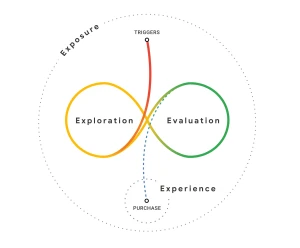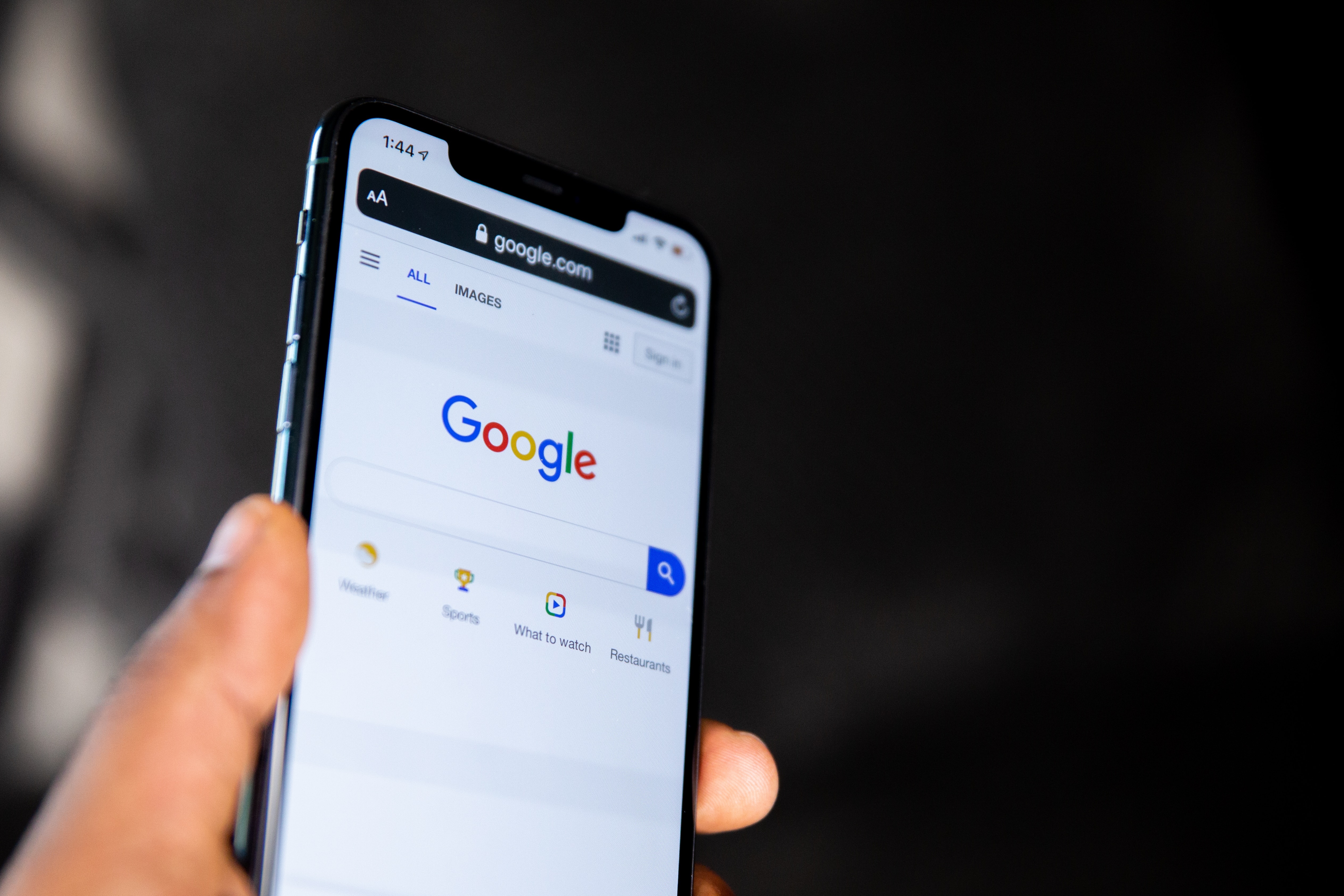
The Messy Middle - Navigating The Middle Funnel
Ecommerce Strategy


Get new articles directly in your inbox! Click here.
Get new articles directly in your inbox! Click here.
Because of the evolution of digital and ecommerce, shopping habits and behaviours have fundamentally changed.
So much choice
So many sources of influence
So much complexity
The messy middle is the outcome of mental processes and how consumers deal with scale using cognitive biases.

Exposure – is all encompassing brand activity. That doesn’t just mean your brand advertising but also, outward perception, word of mouth, cultural association etc.
Exploration – When a consumers is exploring solutions to their want or need. Within search we would expect to see modifiers like “best”, “cheapest” or a specific product function
Evaluation – The stage at which consumers are evaluating their different options specified within the explore phase. Within search we might might see modifiers like “reviews” or even searched for specific discount codes etc.
The purchase is Experience. The key here being that the web experience can make or break a decision. By this stage in the journey, the consumer is probably choosing between a shortlist of products. If your web experience is bad, they will simply go elsewhere and it will probably be too late to convince them otherwise (unless you have an incredibly compelling product which would be an exception).
The difficulty is that the messy middle between explore and evaluate can often move back and forth for an undeterminable amount of time; hence the infinite loop. It is not just as simple as consumers moving down a funnel in a liner order. The journey is far more complex to marketers. To consumers, they just want to find answers to all the questions they have, which seems very straightforward.
There are several cognitive biases which can help influence the messy middle.
Category Heuristics
These are product features or general information which help influence a users buying decision. An example would be if I was looking for a high resolution camera, I may explore camera over a certain megapixel. For marketers, take a look at optimizing product description on PDPs and shopping feeds.
Authority Bias
Consumers will take advice or alter opinions and behaviours based on someone perceived to have authority. For marketers, PR in established publications and influencer marketing can help with building positive brand authority.
Social Proof
According to Google research, this moved the needle the most. Giving people evidence that other shoppers have had a positive experience is extremely persuasive. For marketers, include customer reviews, add star ratings or (when appropriate) use phrases like “nations best”, “most popular”.
Power of Now
Leans into a consumers need for instant gratification. For marketers, think instant downloads, next day/same day delivery.
Scarcity Bias
Making a product seem scarce makes it desirable. Think FOMO, people want an item or they fear what will happen if they don’t. For marketers, use promotions, limited time, limited stick. But be careful, this might not work for explorers! They are only browsing and gathering information and might actually put them off purchasing if they feel pressured.
Power of Free
Entice consumers with something for free. For marketers, this free discount codes, free items with purchases over a certain amount, free delivery for purchases over a certain amount can be really enticing.
Because of the evolution of digital and ecommerce, shopping habits and behaviours have fundamentally changed.
So much choice
So many sources of influence
So much complexity
The messy middle is the outcome of mental processes and how consumers deal with scale using cognitive biases.

Exposure – is all encompassing brand activity. That doesn’t just mean your brand advertising but also, outward perception, word of mouth, cultural association etc.
Exploration – When a consumers is exploring solutions to their want or need. Within search we would expect to see modifiers like “best”, “cheapest” or a specific product function
Evaluation – The stage at which consumers are evaluating their different options specified within the explore phase. Within search we might might see modifiers like “reviews” or even searched for specific discount codes etc.
The purchase is Experience. The key here being that the web experience can make or break a decision. By this stage in the journey, the consumer is probably choosing between a shortlist of products. If your web experience is bad, they will simply go elsewhere and it will probably be too late to convince them otherwise (unless you have an incredibly compelling product which would be an exception).
The difficulty is that the messy middle between explore and evaluate can often move back and forth for an undeterminable amount of time; hence the infinite loop. It is not just as simple as consumers moving down a funnel in a liner order. The journey is far more complex to marketers. To consumers, they just want to find answers to all the questions they have, which seems very straightforward.
There are several cognitive biases which can help influence the messy middle.
Category Heuristics
These are product features or general information which help influence a users buying decision. An example would be if I was looking for a high resolution camera, I may explore camera over a certain megapixel. For marketers, take a look at optimizing product description on PDPs and shopping feeds.
Authority Bias
Consumers will take advice or alter opinions and behaviours based on someone perceived to have authority. For marketers, PR in established publications and influencer marketing can help with building positive brand authority.
Social Proof
According to Google research, this moved the needle the most. Giving people evidence that other shoppers have had a positive experience is extremely persuasive. For marketers, include customer reviews, add star ratings or (when appropriate) use phrases like “nations best”, “most popular”.
Power of Now
Leans into a consumers need for instant gratification. For marketers, think instant downloads, next day/same day delivery.
Scarcity Bias
Making a product seem scarce makes it desirable. Think FOMO, people want an item or they fear what will happen if they don’t. For marketers, use promotions, limited time, limited stick. But be careful, this might not work for explorers! They are only browsing and gathering information and might actually put them off purchasing if they feel pressured.
Power of Free
Entice consumers with something for free. For marketers, this free discount codes, free items with purchases over a certain amount, free delivery for purchases over a certain amount can be really enticing.
Struggling to acquire new customers at scale? Learn more about how we've helped brands just like yours. Click here.
Implications for brands
For heavyweight brands, it hits home that they cannot be complacent as the complex messy middle leaves the door open for other brands with a better story or a perceived better solution.
For challenger brands there is an opportunity. By taking a look at all 6 biases and putting them into play within the messy middle, you stand a really good chance of taking share of voice from more established brands.
Ensure brand presence
Intelligently employ behavioural science
Close gap between trigger and purchase.
A better understanding of cognitive bias that underpin decision making can help create a compelling proposition to appeal to shoppers on an instinctive level.
Looking for
Support?
If you or your brand are looking for support with a particular service or have a question about what you've just read, get in touch and we'll be happy to help!
You might also find these articles interesting.


What is Performance Marketing?
What is Performance Marketing?
Sep 17, 2022
Sep 17, 2022
Performance Marketing, Ecommerce Strategy
Performance Marketing, Ecommerce Strategy


Should a Luxury Brand Invest in Tiktok?
Should a Luxury Brand Invest in Tiktok?
Oct 30, 2022
Oct 30, 2022
Paid Social, Ecommerce Strategy
Paid Social, Ecommerce Strategy


2023 Google Ad Updates.
2023 Google Ad Updates.
Feb 7, 2023
Feb 7, 2023
Paid Search, Performance Marketing
Paid Search, Performance Marketing
Paid Search, Performance Marketing


Using Lead Generation to Support your Ecommerce Strategy.
Using Lead Generation to Support your Ecommerce Strategy.
Feb 15, 2023
Feb 15, 2023
Ecommerce Strategy, Performance Marketing
Ecommerce Strategy, Performance Marketing
Ecommerce Strategy, Performance Marketing
Looking for
Support?
If you or your brand are looking for support with a particular service or have a question about what you've just read, get in touch and we'll be happy to help!